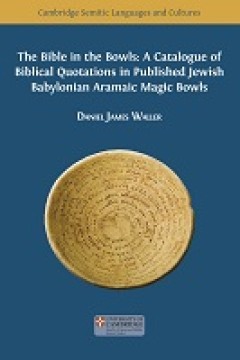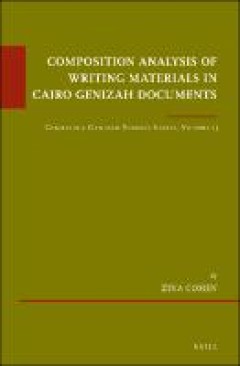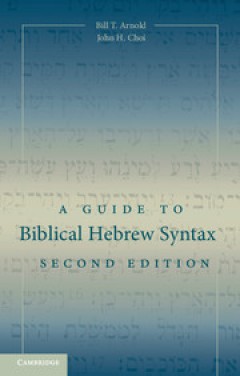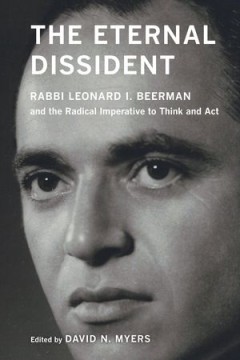Filter by

The Secret of Time: Reconfiguring Wisdom in the Dead Sea Scrolls
- Edition
- -
- ISBN/ISSN
- 9789004537798
- Collation
- 200 hlm; ill., lamp.,
- Series Title
- Studies on the Texts of the Desert of Judah, Volume: 143
- Call Number
- -
- Edition
- -
- ISBN/ISSN
- 9789004537798
- Collation
- 200 hlm; ill., lamp.,
- Series Title
- Studies on the Texts of the Desert of Judah, Volume: 143
- Call Number
- -

The Power of Parables = Essays on the Comparative Study of Jewish and Christi…
The Power of Parables documents the surprising ways in which Jewish and Christian parables bridge religion with daily life. This 2019 conference volume rediscovers the original power of parables to shock and affect their audience, which has since been reduced by centuries of preaching and repetition. Not only do parables enhance the perspective on Scripture or the kingdom of heaven, they also c…
- Edition
- -
- ISBN/ISSN
- 9789004680043
- Collation
- 492 hlm; ill., lamp.,
- Series Title
- Jewish and Christian Perspectives Series, Volume: 39
- Call Number
- -

A Philosophy of Israel Education
This book develops a new philosophy of Israel education. “Person-centered” Israel education is concerned with developing in individual learners the ability to understand and make rational, emotional, and ethical decisions about Israel, and about the challenges Israel regularly faces, whether they be existential, spiritual, democratic, humanitarian, national, etc. Chazan begins by laying out…
- Edition
- 1
- ISBN/ISSN
- 978-3-319-30779-4
- Collation
- oer.unej.ac.id
- Series Title
- -
- Call Number
- VII, 64

The Bible in the Bowls: A Catalogue of Biblical Quotations in Published Jewis…
The Bible in the Bowls represents a complete catalogue of Hebrew Bible quotations found in the published corpus of Jewish Babylonian Aramaic magic bowls. As our only direct epigraphic witnesses to the Hebrew Bible from late antique Babylonia, the bowls are uniquely placed to contribute to research on the (oral) transmission of the biblical text in late antiquity; the pre-Masoretic Babylonian vo…
- Edition
- Ed. 1
- ISBN/ISSN
- 9781800647633, 9781800647640
- Collation
- 196
- Series Title
- Semitic Languages and Cultures, 16
- Call Number
- 296 WAL b

Composition Analysis of Writing Materials in Cairo Genizah Documents: Cambrid…
This work investigates the different writing materials in use in Egypt during the 11th century and the reason for their diversity.; Readership: Academics and specialists working in the Cairo Genizah and in writing material characterization.
- Edition
- Ed. 1
- ISBN/ISSN
- 9789004448872, 9789004469358
- Collation
- 228
- Series Title
- Études sur le judaïsme médiéval, 91
- Call Number
- 208 COH c

A Guide to Biblical Hebrew Syntax
A Guide to Biblical Hebrew Syntax introduces and abridges the syntactical features of the original language of the Hebrew Bible/Old Testament. An intermediate-level reference grammar for Biblical Hebrew, it assumes an understanding of elementary phonology and morphology, and it defines and illustrates the fundamental syntactical features of Biblical Hebrew that most intermediate-level readers s…
- Edition
- -
- ISBN/ISSN
- 9781139939591
- Collation
- -
- Series Title
- -
- Call Number
- -

Apostasy and Jewish identity in High Middle Ages Northern Europe 'Are you st…
The attitude of Jews living in the medieval Christian world to Jews who converted to Christianity or to Christians seeking to join the Jewish faith reflects the central traits that make up Jewish self-identification. The Jews saw themselves as a unique group chosen by God, who expected them to play a specific and unique role in the world. This study researches fully for the first time the vario…
- Edition
- -
- ISBN/ISSN
- 9781526129345
- Collation
- -
- Series Title
- -
- Call Number
- -

Fractured Tablets Forgetfulness and Fallibility in Late Ancient Rabbinic Cul…
This book examines the significant role that memory failures play in early rabbinic literature. The rabbis who shaped Judaism in late antiquity envisioned the commitment to the Torah and its commandments as governing every aspect of a person’s life. Their vision of a Jewish subject who must keep constant mental track of multiple obligations and teachings led them to be preoccupied with forget…
- Edition
- -
- ISBN/ISSN
- 9780520391888
- Collation
- -
- Series Title
- -
- Call Number
- -

The Eternal Dissident
The Eternal Dissident offers rare insight into one of the most inspiring and thought-provoking Reform rabbis of the twentieth century, Leonard Beerman, who was renowned both for his eloquent and challenging sermons and for his unrelenting commitment to social action.
- Edition
- -
- ISBN/ISSN
- 9780520297456
- Collation
- -
- Series Title
- -
- Call Number
- T 296.8 MYE e

Converts of Conviction
The series Studies and Texts in Scepticism contains monographs, translations, and collected essays exploring scepticism in its dual manifestation as a purely philosophical tradition and as a set of sceptical strategies, concepts, and attitudes in the cultural field - especially in religions, perhaps most notably in Judaism. In such cultural contexts scepticism manifests as a critical attitude t…
- Edition
- -
- ISBN/ISSN
- 9783110530797
- Collation
- -
- Series Title
- -
- Call Number
- -
 Computer Science, Information & General Works
Computer Science, Information & General Works  Philosophy & Psychology
Philosophy & Psychology  Religion
Religion  Social Sciences
Social Sciences  Language
Language  Pure Science
Pure Science  Applied Sciences
Applied Sciences  Art & Recreation
Art & Recreation  Literature
Literature  History & Geography
History & Geography